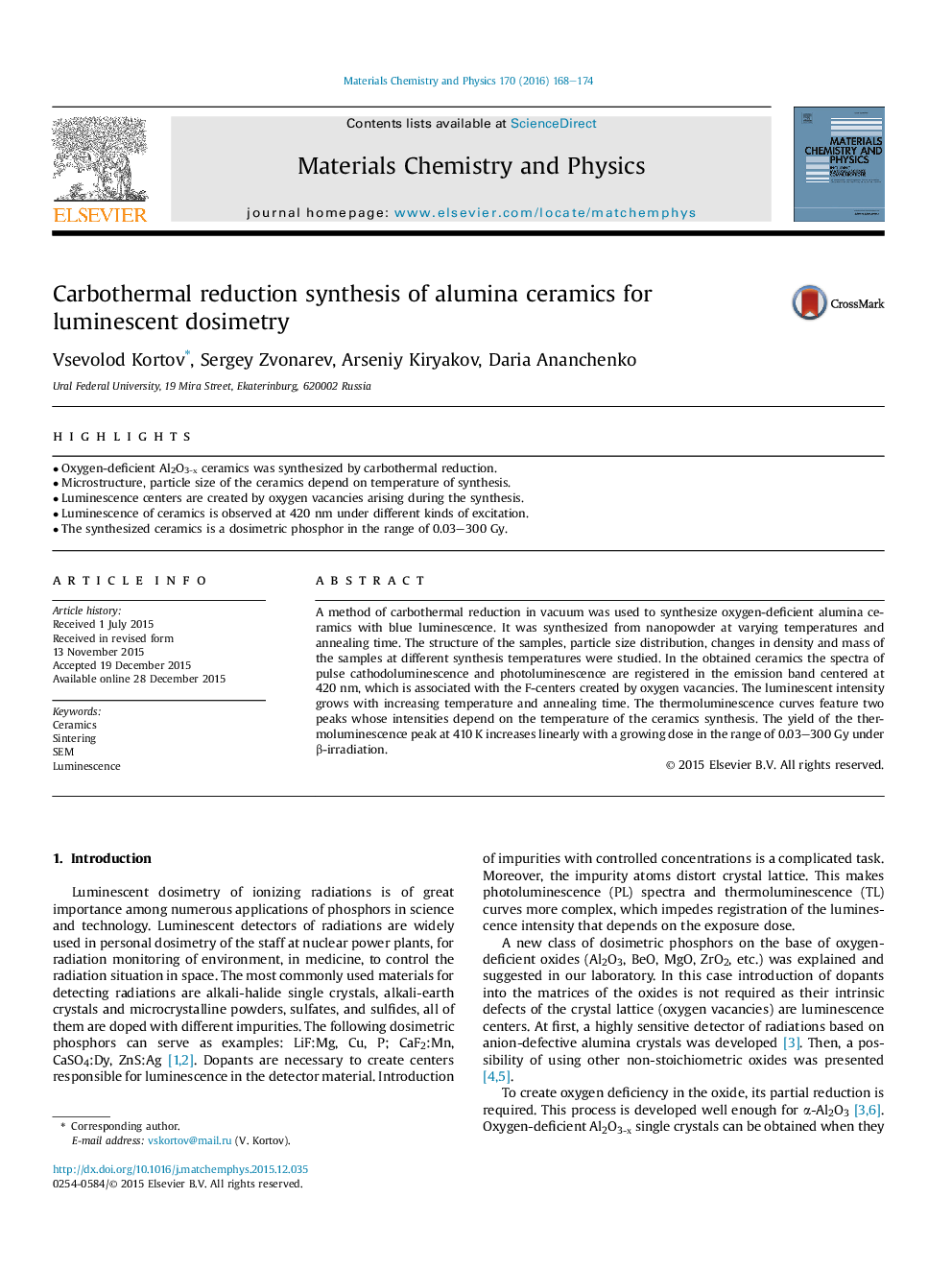| Article ID | Journal | Published Year | Pages | File Type |
|---|---|---|---|---|
| 1520911 | Materials Chemistry and Physics | 2016 | 7 Pages |
Abstract
A method of carbothermal reduction in vacuum was used to synthesize oxygen-deficient alumina ceramics with blue luminescence. It was synthesized from nanopowder at varying temperatures and annealing time. The structure of the samples, particle size distribution, changes in density and mass of the samples at different synthesis temperatures were studied. In the obtained ceramics the spectra of pulse cathodoluminescence and photoluminescence are registered in the emission band centered at 420 nm, which is associated with the F-centers created by oxygen vacancies. The luminescent intensity grows with increasing temperature and annealing time. The thermoluminescence curves feature two peaks whose intensities depend on the temperature of the ceramics synthesis. The yield of the thermoluminescence peak at 410 K increases linearly with a growing dose in the range of 0.03-300 Gy under β-irradiation.
Keywords
Related Topics
Physical Sciences and Engineering
Materials Science
Electronic, Optical and Magnetic Materials
Authors
Vsevolod Kortov, Sergey Zvonarev, Arseniy Kiryakov, Daria Ananchenko,
